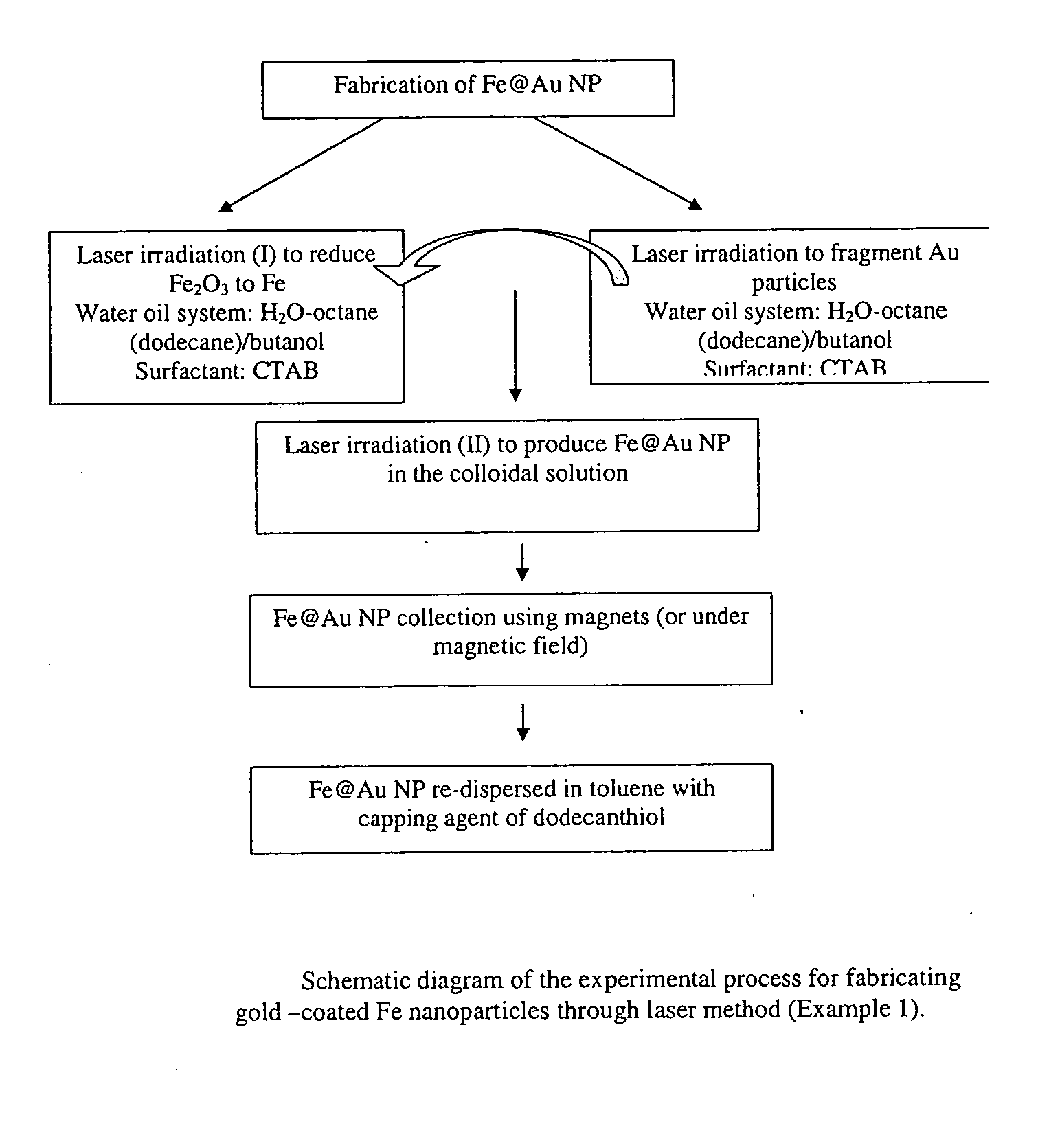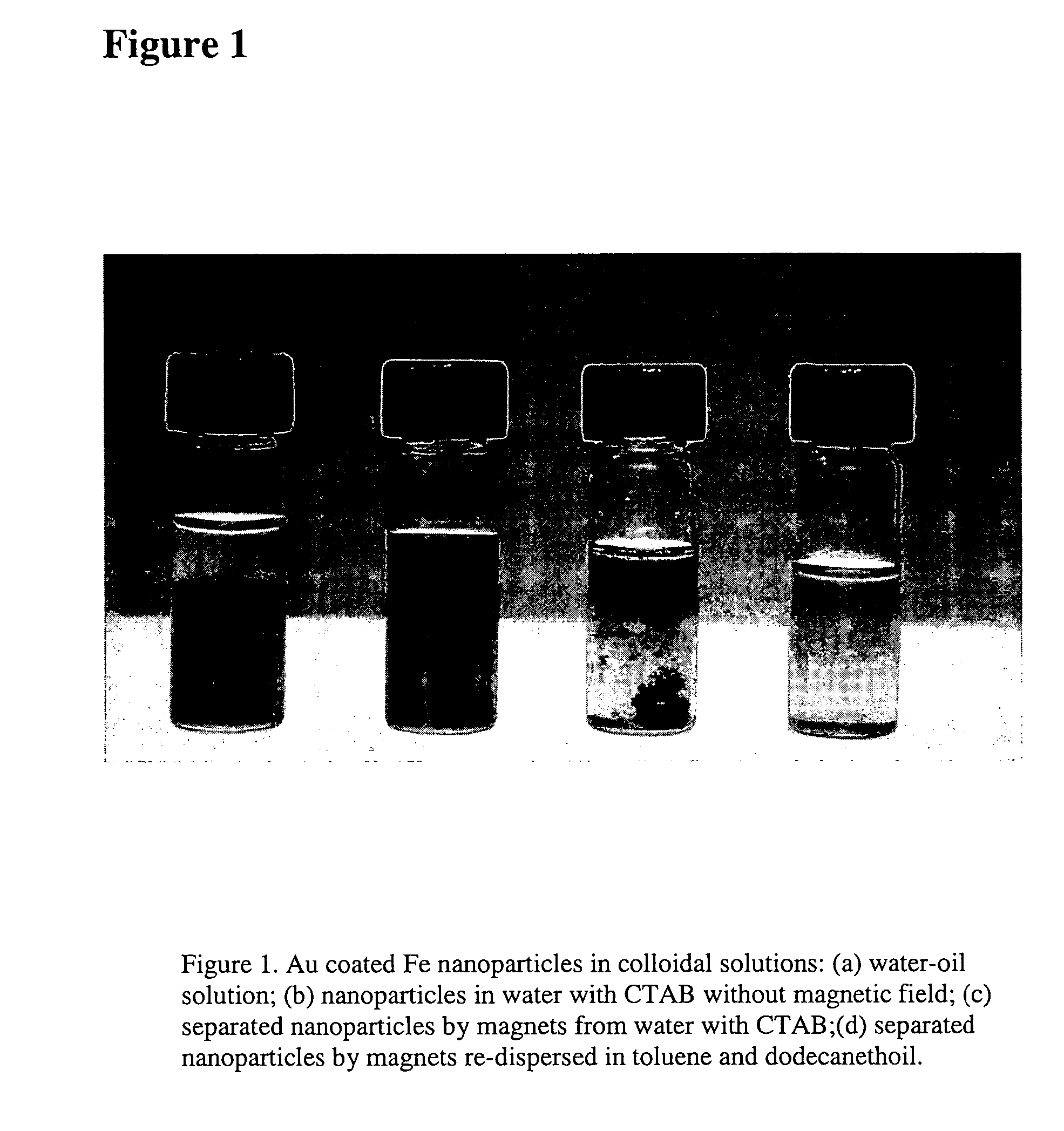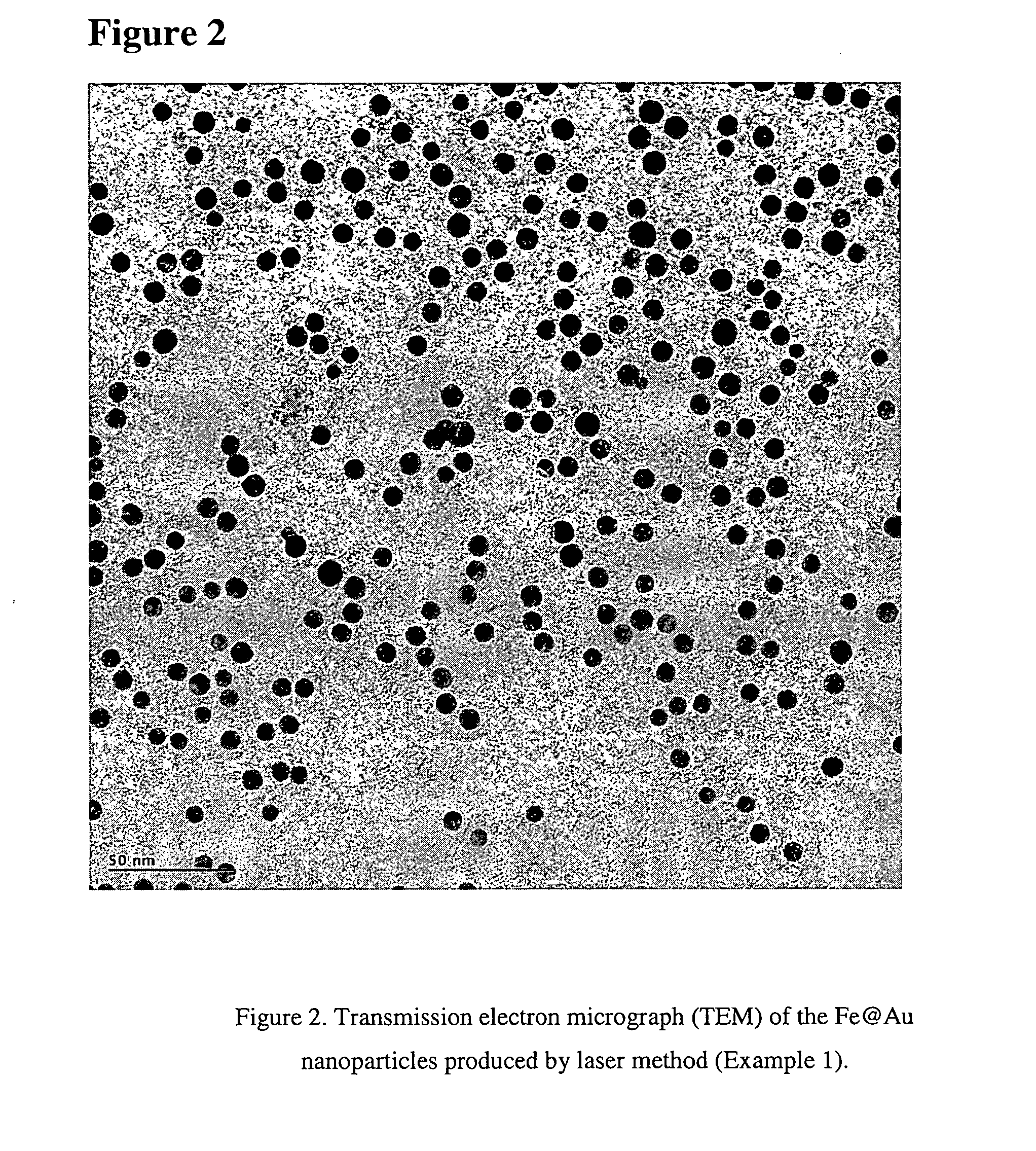Methods for the fabrication of gold-covered magnetic nanoparticles
a technology of magnetic nanoparticles and nanoparticles, applied in the field of gold-covered cores and materials, can solve the problems of oxidized magnetic cores that do not substantially cover the magnetic cores, agglomerate magnetic particles, coalesce and then precipitate, etc., and achieve the effect of reducing the oxidation of the second material
- Summary
- Abstract
- Description
- Claims
- Application Information
AI Technical Summary
Benefits of technology
Problems solved by technology
Method used
Image
Examples
example 1
[0045] Monodispersed gold coated iron nanoparticles were prepared in water-in oil reverse microemulsion of CTAB (cetyltrimethyl-ammonium bromide) / octane (or dodecane) / butanol / water. Butanol acted as a co-surfactant.
examples
Experimental Process
[0046] 1. Laser ablation: [0047] Solution A. Fe2O3 (50 mg)*1 in butanol / octane (or dodecane*2) (15:15 ml) with CTAB (0.12 g), 50 ml H2O
*1 The better results can be obtained when the concentration of Au is larger than that of Fe2O3
*2 from TEM results, nanoparticles with core-shell structured are succeed in both of solutions (water-octane and water-dodecane). However, homogenous fine nanoparticles are substantial in system water-octane.
[0048] 1 h, 20 Hz, 250 mJ (65 mJ) [0049] *Fe2O red powder subjected to laser irradiation changed to black powder, most of the black powder is Fe which can be identified by XPS, or XRD.
[0050] 2. Laser ablation: [0051] Solution B. Au (90 mg)*1 in butanol / octane (or dodecane*2) (15:15 ml) with CTAB (0.12 g), 50 ml H2O
*1 The better results can be obtained when the concentration of Au is larger than that of Fe2O3
*2 from TEM results, nanoparticles with core-shell structured are succeed in both of solutions (water-octane and water-do...
example 2
Preparation of Gold Covered Zero-Valent Iron Nano-Particle's (Fe@Au) Using Wet Chemistry-Laser Massage Hybrid Method
[0058] The Fe@Au nano-particles can be prepared using two general routes. One route consists of making both the magnetic core and the gold shell using laser irradiation. The second route consists of preparing the magnetic core through “wet chemistry” methods and subsequently of coating the magnetic nano-particles with gold using the laser irradiation method. Wet chemistry is meant here to include reduction methods, thermal decomposition methods and plasma methods. The main advantages of this method is that the overall yield is increased as well as the control on the size of the magnetic core.
[0059] Here there is described a protocol to make Fe@Au using the thermal decomposition of Fe(CO)5 to synthesize the iron core followed by laser massaging to make the gold shell.
[0060] 1. Fe nanoparticles were synthesized using the thermal decomposition of iron pentacarbonyl in ...
PUM
| Property | Measurement | Unit |
|---|---|---|
| volume | aaaaa | aaaaa |
| diameter | aaaaa | aaaaa |
| volume | aaaaa | aaaaa |
Abstract
Description
Claims
Application Information
 Login to View More
Login to View More - R&D
- Intellectual Property
- Life Sciences
- Materials
- Tech Scout
- Unparalleled Data Quality
- Higher Quality Content
- 60% Fewer Hallucinations
Browse by: Latest US Patents, China's latest patents, Technical Efficacy Thesaurus, Application Domain, Technology Topic, Popular Technical Reports.
© 2025 PatSnap. All rights reserved.Legal|Privacy policy|Modern Slavery Act Transparency Statement|Sitemap|About US| Contact US: help@patsnap.com



